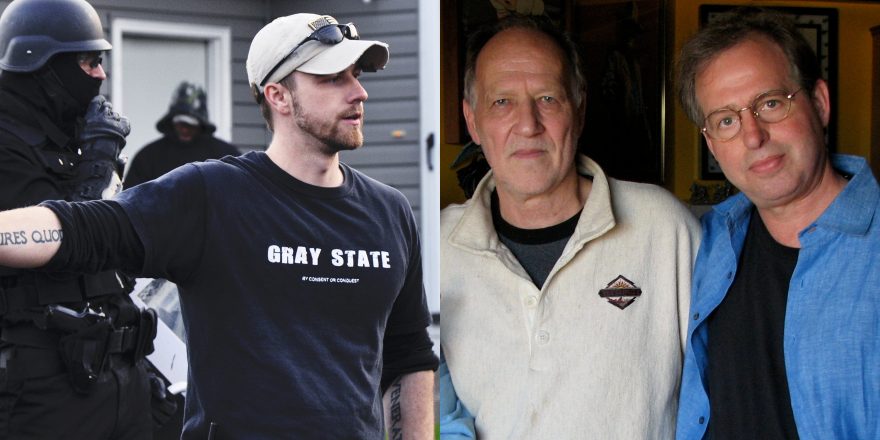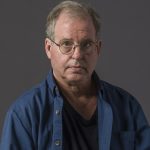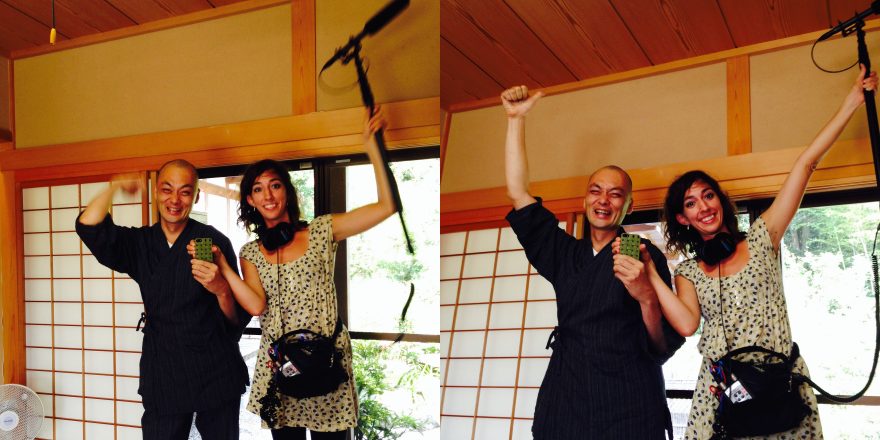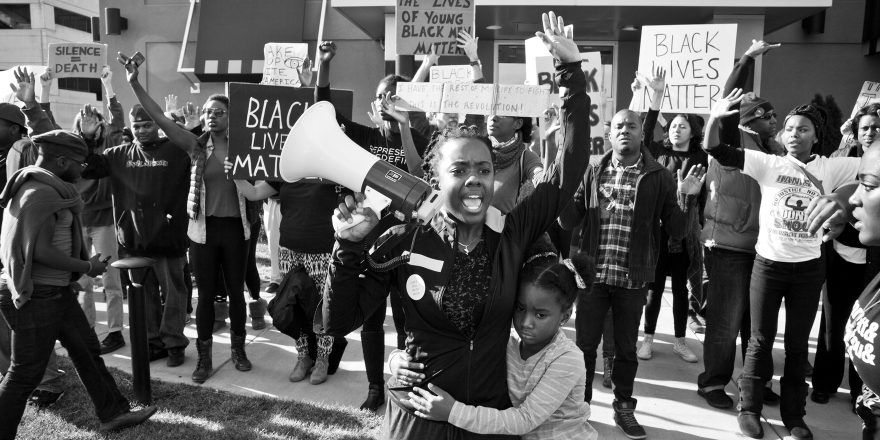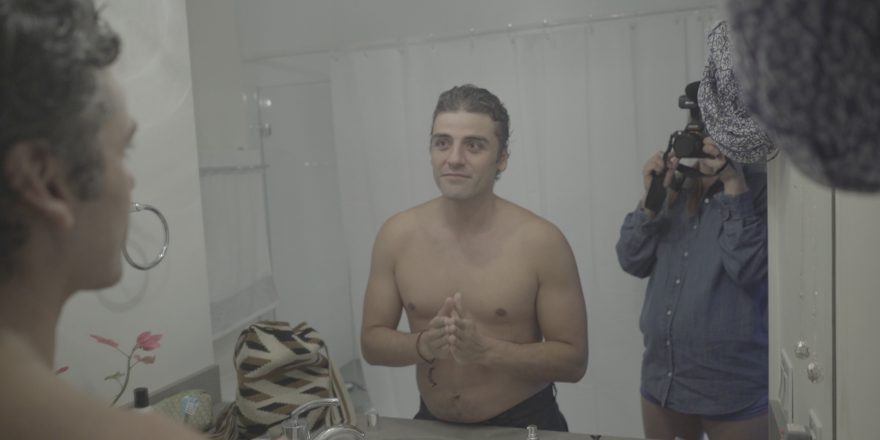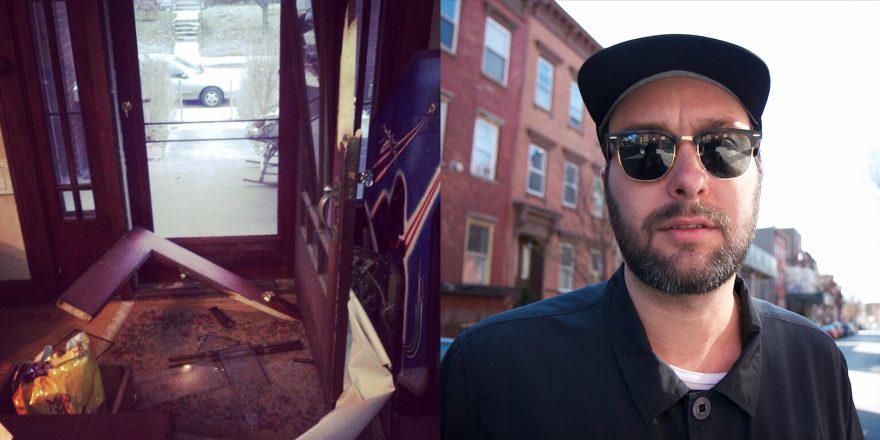It’s not easy speaking to the dead.
But it seems that it has become my day job.
Let me explain.
Fourteen years ago, I saw a CNN news alert that a man and his girlfriend had been discovered dead in an Alaska wildlife preserve, their bodies ravaged by a grizzly bear. The name of one of the victims, Timothy Treadwell, was vaguely familiar to me. I had been producing and directing films for the Discovery Channel, and so had Treadwell. The more I read about his story, and details of the footage that Treadwell had left behind, the more I felt there was a documentary there. And thinking that there was a feature narrative film there, perhaps starring Leonardo DiCaprio, who was a supporter of Treadwell’s organization “Grizzly People,” I shared my research with Werner Herzog, whom I thought would be perfect to direct this “Big Hollywood Star Against Nature” solo epic.
But instead, Herzog wanted to direct the documentary I was developing. Somewhat surprised that he would pass up the chance to try and helm a DiCaprio feature project, but wanting to see what Herzog would make of this material, I agreed to hand over the directorial reigns.
Good call.
Herzog filmed his principal footage in early September of 2004, and we ambitiously decided to shoot for a Sundance premiere four months later, during the following January.
But in order to make that date, we had to industrialize postproduction.
There was a dowry of around 90 hours of footage that Treadwell had accumulated over his summers in the preserve. As Herzog was clear that he was not interested in “fluffy nature shots,” I assigned the initial screening process to a handful of production assistants, and told them to put star ratings next to any footage that seemed personal or just plain weird. The weirder, the more stars to award. After this screening process, we had 10 hours of footage that had been given three stars or more, as Timothy Treadwell had shot a lot of personal (and weird) footage. These 10 hours were passed on to Werner and his editor, Joe Bini, and the edit games began.
As we raced to complete the project, it soon became obvious that an odd dynamic had developed between Herzog and Treadwell. Herzog saw the power in both Treadwell’s magnetic personality, and in the ravishing images that Treadwell had captured (many inadvertently, when he left the camera running as he took one of his countless “selfies”). This dynamic led to a “conversation” between the two directors, and that debate, in my opinion, is what gave Grizzly Man its narrative drive. Herzog put together both the film he thought Treadwell was trying to make, while at the same time admonishing ghostly partner for his naïve grasp of Herzog’s principal subject: nature.
As this editing process continued, Herzog and I would constantly try and second-guess Treadwell’s intentions, and what he would have made of our project. Would he have objected to “his” footage being used in another filmmaker’s project? Would he have wanted some kind of last word? And always, how is it possible to respect a man, who, with a seeming death wish, coaxed his girlfriend into sharing his fate?
We did the best we could, and in just a few months, locked down the film, just in time for its January 2005 Sundance premiere.
Ironically, as it turned out, the explanation we heard as to why Grizzly Man was omitted from the 2005 Best Documentary Oscar short list, was that it was considered to be a “found footage” film. It wasn’t considered to be a “real” documentary, as it was not created by a solo documentary director.
But no matter, Grizzly Man worked for Herzog and me, and we still believe it would have worked for Timothy Treadwell. The film began a rewarding creative partnership between myself and Herzog that continues to this day.
But, in the words of Dizzy Gillespie, “the professional is the guy who can do it twice.” My quest to find another subject as compelling as Timothy Treadwell began pretty much as soon as the house lights went up after our Sundance premiere.
But it would not be until 11 years later, January 2015, that I found my next ghostly collaborator.
David Crowley was a 25-year-old filmmaker in Apple Valley, Minnesota. He began filming the trailer for a project he called Gray State, a film that only existed in his fever dreams. Gray State was to be an epic, bringing to life the worst fears of what might happen if the movement articulated by Alex Jones was correct, and that the New World Order seizes final control of America. Featuring FEMA camps, street executions, mass round-ups, microchips forcibly implanted in innocent children’s arms, Crowley’s trailer is a shockingly powerful descent into a mad, dystopian world that millions of Americans have been convinced is just on our horizon.
After Crowley released his trailer in 2012, he became a YouTube sensation, securing financing to write a feature script, and ultimately in the summer of 2014, a Hollywood deal to further finance the production of his $30 million epic.
But then, in January of 2015, just as he was on the brink of achieving all of his dreams, David Crowley, his wife, Komel, and their five-year-old daughter were found shot to death in their Apple Valley home.
When I read the brief news story, I sensed something powerful, and immediately went to Crowley’s Gray State YouTube page. All of his material was still there. I began to submerge myself into not only his trailer, but a seemingly endless series of behind-the-scenes videos he had filmed documenting the making of his epic. I instantly knew two things. One, here was a gifted filmmaker at work. And two, there was much, much more out there that Crowley had not publicly posted, footage that might ultimately solve a mystery that was being battened down by many conspiracy cultists who were (and still are) absolutely convinced that Crowley and his family were assassinated for getting “too close” to the truth.
After a year of delicate negotiation with his family, I obtained 23 terabytes of Crowley’s Gray State footage, his laptop and most importantly, all of his home videos and family pictures, 13,000 in all.
I then began to speak with a ghost, a filmmaker, and a murderer.
Unlike Timothy Treadwell, who documented only the summers he spent communing with bears, Crowley documented every aspect of his life, from his 2006 service in Iraq and then Afghanistan, to his various get-rich-quick schemes, to his home life. He constantly turned his iPhone camera (always in 16:9, widescreen) on his family, and I watched his daughter grow up, his intense and loving dialogues with his wife, and the holidays he shared with the family he left behind.
And there were other things that were captured in front of his lens.
Eerie? Often. Disorienting? Constantly. Shocking?
Yes.
Early on in the editing process, I decided to score the film entirely with the original music that Crowley had written and performed, save for one song that was found playing on a loop throughout the house when the police finally arrived, three weeks after the Christmas Day shooting.
As I went through every frame that Crowley had filmed, and listened to the music he had created to accompany his descent into madness, I felt I was becoming the one-man cast of a Ring-type horror thriller, where a director (me) slowly becomes consumed by his subject. I would occasionally “go native,” and forget just where this road was going to end. I often wanted to reach out to Crowley, to give him career advice, and suggest a different kind of road that did not travel through this dark forest of conspiracy and paranoia.
I wanted to warn his wife to run, to get out, before it got too late, and for God’s sake, take her child with her.
Because I knew where this journey was going to end.


